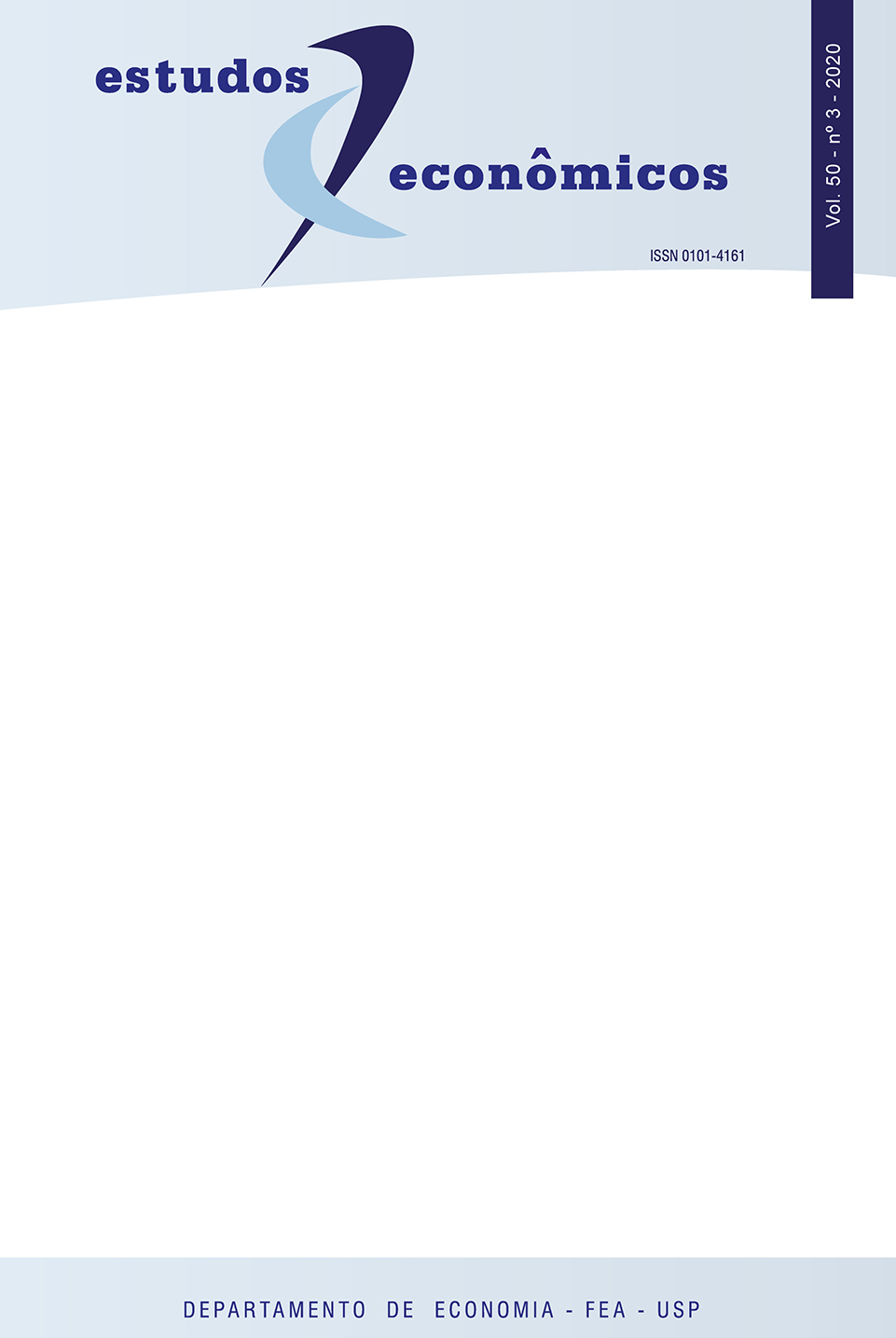Heterogeneity of institutional investors: evidence from Brazilian non-financial corporations
DOI:
https://doi.org/10.1590/0101-41615032crcKeywords:
institutional investor, heterogeneity, cluster analysisAbstract
The purpose of this study is to identify the institutional investors that operate in the Brazilian corporate market. Taking into account, in particular, their characteristics and investment profile, the research explores the heterogeneity of these investors. Using factor analysis and cluster analysis, results showed the presence of four different groups of institutional investors in the Brazilian non-financial corporations. Intra-group heterogeneity was confirmed. Institutional investors grouped into two clusters suggested a profile characterized by myopic investments, while the third (fourth) cluster showed a less volatile (conservative) profile.
Downloads
References
Bena, J; Ferreira, M. A.; Matos, P.; Pires, P. 2016. “Are foreign investors locusts? The long-term effects of foreign institutional ownership.” European Corporate Governance Institute, Finance Working Paper no. 468.
Black, B. S.; Carvalho, A. G.; Gorga, E. 2008. “An overview of Brazilian corporate governance.” Cornell Law Faculty Publications Paper no. 101.
Brickley, J. A.; Lease, R. C.; Smith, C. W. 1998. “Ownership structure and voting on anti-takeover amendments.” Journal of Financial Economics 20: 267-291.
Brossard, O.; Lavigne, S.; Sakinç, M. E. 2013. “Ownership structures and R&D in Europe: The good institutional investors, the bad and ugly impatient shareholders.” Industrial and Corporate Change 22 (4): 1031–1068.
Bushee, B. J. 1998. “The influence of institutional investors on myopic R&D investment behavior.” The Accounting Review 73 (3): 305–333.
Bushee, B. J. 2001. “Do Institutional investors prefer near-term earnings over long-run value?” Contemporary Accounting Research 18 (2): 207–46.
Bushee, B. J. 2004. “Identifying and Attracting the “right” investors: evidence on the behavior of institutional investors.” Journal of Applied Corporate Finance 16 (4): 28–35.
Çelik, S.; Isaksson, M. 2013. “Institutional investors as owners: who are they and what do they do?” OECD Corporate Governance Working Papers Working Paper no. 11.
Chen, X.; Harford, J.; LI, K. 2007. “Monitoring: Which institutions matter?” Journal of Financial Economics 86 (2): 279–305.
Colot, O.; Bauweraerts, J. 2016. “Are institutional investors beneficial to family firm performance? Evidence from the French stock exchange.” International Journal of Financial Research 7 (2): 39–52.
Crane, A. D.; Michenaud, S.; Weston, J. P. 2016. “The effect of institutional ownership on payout policy: evidence from index thresholds.” Review of Financial Studies 29 (6): 1377–1408.
Crotty, J. 2002. “The effects of increased product market competition and changes in financial markets on the performance of nonfinancial corporations in the neoliberal era.” Political Economy Research Institute Working Paper no. 44.
Eriksen. K. W.; Kvaløy, O. 2010. “Myopic investment management.” Review of Finance 14 (3): 521–542.
Ferreira, M. A.; Matos, P. 2008. “The colors of investors’ money: The role of institutional investors around the world.” Journal of Financial Economics 88 (3): 499–533.
Figueiredo Filho, D. B.; Silva Júnior, J. A. Da. “Visão além do alcance: uma introdução à análise fatorial”. Opinião Pública 16 (1): 160–185.
Fu, X.; Tang, T.; Yan, X. 2019. “Why do institutions like corporate social responsibility investments? Evidence from horizon heterogeneity.” Journal of Empirical Finance 51: 44–63.
Hair, J. F.; Black, W. C.; Babin, B. J. 2009. Multivariate data analysis: a global perspective. 7. ed. Upper Saddle River: Prentice Hall.
Johnson, R. A.; Wichern, D. W. 2013. Applied multivariate statistical analysis. 6. ed. New Jersey: Pearson Education Limited.
Katan, H.; Mat Nor, F. 2015. “Institutional ownership heterogeneity and firm performance: evidence from Malaysia.” International Journal of Economics and Finance 7: 176–188.
Kim, H.; Park, K.; Roy Song, K. 2017. “Do long term institutional investors foster corporate innovation?” Accounting and Finance, in press. DOI:10.1111/acfi.12284
Kim, H.; Kim, T.; Kim, Y.; Park, K. 2018. “Do long-term institutional investors promote corporate social responsibility activities?” Journal of Banking & Finance, in press.
Lazonick, W.; O'sullivan, M. 2000. “Maximizing shareholder value: a new ideology for corporate governance.” Economy and Society 29 (1): 13–35.
Lazzarini, S. G. 2011. Capitalismo de laços. Os donos do Brasil e suas conexões. Rio de Janeiro: Elsevier.
Maaten, L. Van Der; Hinton, G. 2008. “Visualizing data using t-SNE.” Journal of Machine Learning Research, 620(1): 267–84.
Maia, A. G. 2002. “Valoração de recursos ambientais.” Dissertação de Mestrado, Universidade Estadual de Campinas.
Maia, A. G. 2006. “Espacialização de classes no Brasil: uma nova dimensão para análise da estrutura social.” Tese de Doutorado, Universidade Estadual de Campinas.
Miyajima, K.; Shim, I. 2014. “Asset managers in emerging market economies.” BIS Quarterly Review.
OCDE. 2014. "Are institutional investors the answer for long-term development financing?" In Development Co-operation Report 2014: Mobilising Resources for Sustainable Development, edited by OCDE, 79–89. Paris: OECD Publishing.
Orhangazi, O. 2008. “Financialization and Capital accumulation in the non-financial corporate sector: a theoretical and empirical investigation of the US economy, 1973–2004.” Cambridge Journal of Economics 32 (6): 863–86.
Siffert Filho, N. 1998. “Governança corporativa: padrões internacionais e evidências empíricas no Brasil nos anos 90”. Revista do BNDES: 1–23.
Downloads
Published
Issue
Section
License
Copyright (c) 2020 Camila Veneo Campos Fonseca, Rodrigo Lanna Franco da Silveira, Célio Hiratuka

This work is licensed under a Creative Commons Attribution-NonCommercial 4.0 International License.
By submitting an article, the author authorizes its publication and attests that it has not been submitted to any other journal. The original article is considered final. Articles selected for publication are proofread for grammatical and orthographic errors. The journal does not pay rights for published articles. The Institute of Economic Research from the School of Economics, Business and Accounting of the University of São Paulo (Instituto de Pesquisas Econômicas da Faculdade de Economia, Administração e Contabilidade da Universidade de São Paulo) owns the journal's copyright.





 Atualizado em 14/08/2025
Atualizado em 14/08/2025